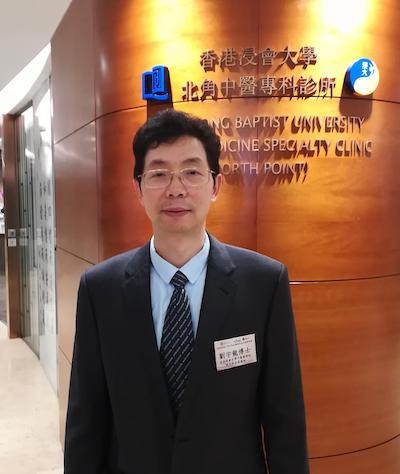Pancreatic Cancer - Traditional Chinese Medicine Treatment
Information provided/updated by:
Professor Liu Yulong,
School of Chinese Medicine, Hong Kong Baptist University,
Clinical Professor of Chinese Medicine

Introduction:
In this article, Professor Liu Yulong introduces us to how traditional Chinese medicine treats pancreatic cancer from a Chinese medicine perspective.
A. Overview (including organs, systems, and the use and differences of terms in Chinese and Western medicine)
B. Causes/Symptoms/Diagnosis
C. Treatment Methods
A. Overview (including organs, systems, and the use and differences of terms in Chinese and Western medicine)
The pancreas has a head, neck, body, and tail. It lies horizontally on the posterior abdominal wall:
・The right side is the head, embedded in the duodenum, where the pancreatic duct (a duct rich in digestive enzymes) and the common bile duct (a duct formed by the convergence of small bile ducts in the liver responsible for transporting bile) open together into the duodenum;
・The middle is the body, crossing the front of the 1st-2nd lumbar vertebrae; and
・The left end is the tail, close to the spleen.
The front of the pancreas is the posterior wall of the stomach, transverse colon. Behind it are the abdominal arteries and veins, and the nerve plexus around the pancreas.
In short, the pancreas is located in the center of the human trunk, similar to the "transportation hub" of the human body's internal and external upper and lower parts.
Pancreatic cancer mainly refers to exocrine pancreatic adenocarcinoma. It is a common malignant tumor of the digestive system, accounting for about 1% to 4% of all malignant tumors in the body. Due to the special position of the pancreas, especially pancreatic head cancer, the tumor blocks traffic, causing small intestinal obstruction (vomiting), bile duct obstruction (jaundice), and nerve gland obstruction (upper abdominal back pain---pain when not flowing).
B. Causes/Symptoms/Diagnosis
(Cause of disease in traditional Chinese medicine)
Traditional Chinese medicine believes that long-term mental tension and emotional depression lead to qi stagnation and blood stasis.
When qi stagnates, fluids accumulate into phlegm; coupled with greasy diet, it forms a "form-rich, qi-deficient" obese constitution. Overeating of fatty and sweet foods damages the spleen and stomach, the spleen fails in transportation, and damp phlegm accumulates. Drinking alcohol damages the middle, the spleen and stomach are deficient, and damp heat is generated internally.
Qi stagnation, blood stasis, damp heat, and phlegm turbidity accumulate over time to form cancer toxin. The cancer mass obstructs, the meridians are not flowing, and there is pain when not flowing, hence the upper abdominal and back pain and abdominal pain.
The spleen governs transportation and transformation, and spleen deficiency can lead to poor appetite and weight loss. Inhibited qi transformation, spleen deficiency with dampness-heat, and the steaming of the liver and gallbladder can cause bile to deviate from its normal path, resulting in "jaundice" and "yellow eyes". When it infiltrates the urine, the urine turns yellow.
(Western medicine cause)
The occurrence of pancreatic cancer is closely related to smoking, drinking, high-fat and high-animal protein diet, as well as diabetes, pancreatitis, gallstone disease, and other factors.
C. Treatment methods
[Entry point for traditional Chinese medicine treatment]
Traditional Chinese medicine assists Western medicine treatment
The treatment of pancreatic cancer should be based on different stages, distinguishing the power contrast between healthy qi and pathogenic qi, and adopting the treatment principles of either attacking, supplementing, or both.
Early stage pancreatic cancer
In the early stage, the healthy qi is strong and the pathogenic qi is not substantial, so surgical treatment is the main method. After surgery, combine with traditional Chinese medicine treatment.
Treatment method: Strengthen the spleen and stomach, attack the pathogen to remove the residue, and prevent recurrence. It can also alleviate postoperative poor appetite, abdominal distension, and diarrhea.
Mid-stage pancreatic cancer
In the mid-stage, the healthy qi is still strong. For those with vigorous cancerous pathogenic qi, if the surgery cannot completely remove it, Western medicine will perform bypass surgery or bile duct drainage to relieve jaundice or duodenal obstruction. Assist with traditional Chinese medicine conditioning during Western medicine radiotherapy and chemotherapy.
Treatment method: Strengthen the spleen to resolve dampness, harmonize the stomach to stop vomiting, and relieve pain urgently. The purpose is to reduce the side effects of radiotherapy and chemotherapy, such as vomiting, abdominal pain, diarrhea, etc.
Late-stage pancreatic cancer
In the late stage, the body is weak and the cancerous pathogenic qi is vigorous, so the main treatment is traditional Chinese medicine, and if necessary, Western medicine is used for pain relief and other palliative treatments.
Treatment principle: The main focus is on reinforcing the healthy qi and strengthening the body, supplemented by anticancer and symptom relief, improving the quality of life, and achieving the goal of living with the tumor.
Pure traditional Chinese medicine treatment
Pure traditional Chinese medicine treatment is suitable for elderly patients, those with great deficiency who cannot tolerate surgery, chemotherapy, and radiotherapy.
Clinical treatment is divided into early, middle, and late stages, with the key to distinguish the primary and secondary of evil and righteousness and their proportions.
In the early stage, the healthy qi is still available, and the cancer toxin is more vigorous. The pathological characteristics are spleen deficiency, blood stasis, and dampness-heat.
In the middle and late stages, exhaustion and malignant disease quickly appear, manifested as great deficiency of healthy qi. Clinically, treatment can be given according to the priority and urgency of the disease.
The early stage syndrome type is mostly liver depression and spleen deficiency, dampness and blood stasis accumulation; the middle stage is deficiency of healthy qi and excess of pathogenic qi; the late stage is mainly deficiency of healthy qi.
Pain management
Abdominal pain is the most common symptom of pancreatic cancer, severely affecting the patient's quality of life. For the treatment of pancreatic cancer pain:
・For mild to moderate pain, traditional Chinese medicine treatment is the main method;
・For moderate and severe pain, Western medicine's three-step pain relief method should be used, with traditional Chinese medicine assisting in alleviating the side effects of morphine-like painkillers, such as dizziness, nausea, vomiting, and constipation. For those with persistent severe pain that is not ideal for the three-step therapy, abdominal nerve plexus block anesthesia can be used for pain relief when necessary.
Screening and treatment methods
The treatment effect of late-stage pancreatic cancer is not ideal, so early detection and screening of pancreatic cancer, early treatment, and active prevention to reduce the chance of pancreatic cancer are particularly important. The symptoms of pancreatic cancer are similar to general indigestion and are easily overlooked. When jaundice or abdominal and back pain are diagnosed, most have already lost the opportunity for surgical radical cure. Since there are no symptoms in the early stage of pancreatic cancer, the only way to detect pancreatic cancer early is through regular physical examinations or screenings for high-risk individuals of pancreatic cancer.
The following are high-risk groups for pancreatic cancer:
・Men over 40 years old;
・Long-term smoking and drinking;
・Have a history of diabetes, chronic pancreatitis, and cholecystitis;
・Overweight and obese people; and
・People with a family history of pancreatic cancer:
They should undergo regular check-ups every year, including liver, gallbladder and pancreas color ultrasound, blood tests for tumor markers, such as CA 199, CEA, etc.
(January 2021)




